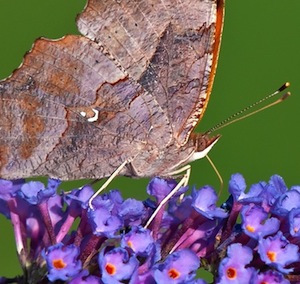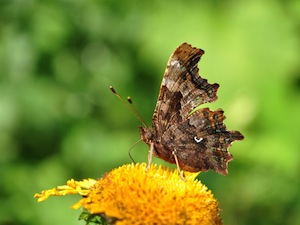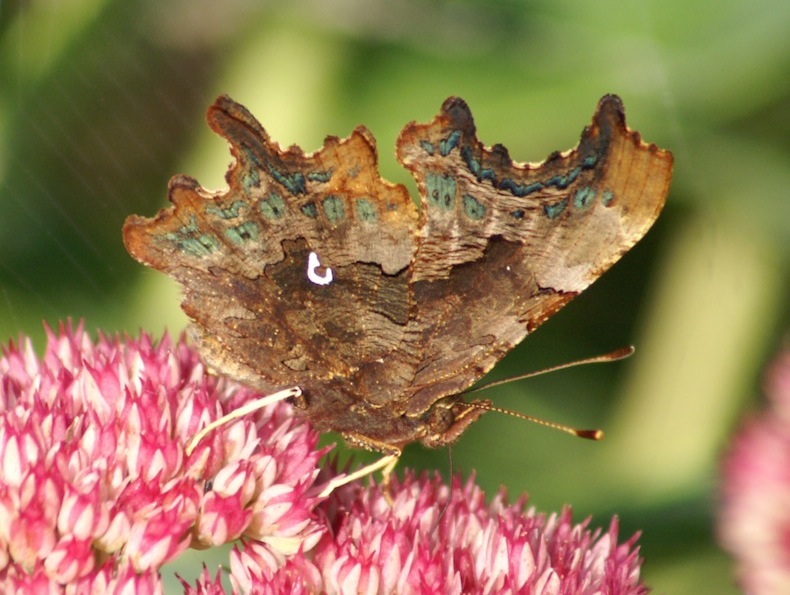LWON is celebrating the holidays by re-running some of our favorite posts. This post originally appeared in November 2013.
Several years ago, I splurged on a gorgeous red hardcover edition of Strunk and White’s classic book on writing, The Elements of Style. Illustrated by Maira Kalman, the pages are filled with fanciful depictions of punctuation and grammar rules. To demonstrate the use of the apostrophe in the phrase “Somebody else’s umbrella,” Kalman drew a pensive lady dressed in yellow gazing up at a pink umbrella (with, appropriately enough, an apostrophe-shaped handle). For the dash—my favourite form of punctuation—the illustration shows a towzled man in striped pajamas, accompanied by the caption “His first thought on getting out of bed—if he had any thought at all—was to get back in again.”

Recently, I came across another form of punctuation art: The curious markings on butterflies. Some species in the genus Polygonia sport a comma on the underside of their wing. Another species, called the Question Mark (Polygonia interrogationis), displays a quizzical crescent and dot. And enthusiasts have spotted other punctuation marks; one posted a snapshot taken in Spain with the question “First ever sighting of the semi-colon butterfly?”, and another photographer captured what appeared to be a colon on a butterfly in Staffordshire, England.*
But what is the purpose of these cryptic symbols? One team of scientists in Sweden tried to find out in a study published in Animal Behaviour. The researchers studied the species Polygonia c-album, which has a white comma on its wing. They speculated that the mark might somehow distract predators from recognizing the insect. (These comma butterflies also use camouflage as a defense: They resemble ragged yellowish-brown leaves.)

To investigate, the scientists euthanized comma butterflies and “erased” some of the insects’ commas with a black permanent marker. Then they presented pairs of the butterflies, one with a comma and one without, to 62 birds called blue tits. The birds tended to attack the comma-less butterfly, the team reports.
The researchers got different results when they repeated the experiment in the wild. They placed butterflies with and without commas on tree trunks in Stockholm and Tovetorp, Sweden, then checked back over the next few months to see if predators had taken the insects. But they didn’t see any difference in the disappearance rate between the two types of butterflies. That might be because some predators hunt at night, when such marks wouldn’t be visible anyway.
What about the purpose of the question mark on Polygonia interrogationis? Good question.
* In case you can’t tell, I’m trying to use as many punctuation marks as possible in this post.
Image credits
First photo: David Merrett | Flickr
Second photo: Leena Robinson | Shutterstock
Third photo: Cristian Gusa | Shutterstock

What if they are emoticons?
Ha, that’s possible!